1935: Redbirds and Rioting
A 27-0 loss to the Muir Technical Mustangs of Pasadena in the first round of the Southern California playoffs did not dim the luster of one of the greatest seasons in the history of Hoover High football.
John Perry, who guided the Cardinals’ program from its beginning in 1930, directed the Eastside club to its first victory over San Diego, won the new Bay League championship, and led the Redbirds to a 7-1-1 record.
Hoover has had few teams equal that kind of success.
Only the Cardinals squads of 1949 (8-1), 1954 (8-2), 1956 (8-2), 1962 (7-2), 1963 (7-2-1), 1986 (8-4), 1998 (8-4), 1999 (10-2), 2006 (9-3), and 2014 (10-3) won as many.
Walt Harvey, 92 years young and residing in El Cajon, spoke in the summer of 2010 and remembered the Muir squad.
“We knew nothing about them, probably that they were this small, technical school,” said Harvey, a Cardinals halfback in the fall and sprinter on the track team in the spring. “They came down here and just ran up and down the field.”
The visitors were not a collection of future electricians or mechanics.
One of the Mustangs’ touchdowns, before the largely Hoover evening gathering of 4,000 persons (almost 1,000 came south from Pasadena), was on a 16-yard halfback-option pass from Jackie Robinson (yes, that Jackie Robinson) to Mickey Anderson.
Robinson, whose older brother Mack would be a medal-winning sprinter on the U.S.’ 1936 Olympics team, and Anderson, whose brother George was a world-class sprinter at California-Berkeley, were just part of a fleet stable of Mustangs that also included sprinters Bill Sangster, Brainard Worrill, and Preston Clipper.
The San Diego Union sportswriter Harry Hache described the visitors as “streamlined, like the Burlington Zephyr… class wrapped up in a pigskin whirlwind.”
Hache and other observers were not happy that Hoover and Muir were to meet in the quarterfinals (first round). According to the scribe, “It had been a foregone conclusion that these were the two best teams in Southern California and were destined to meet in December for the championship.”
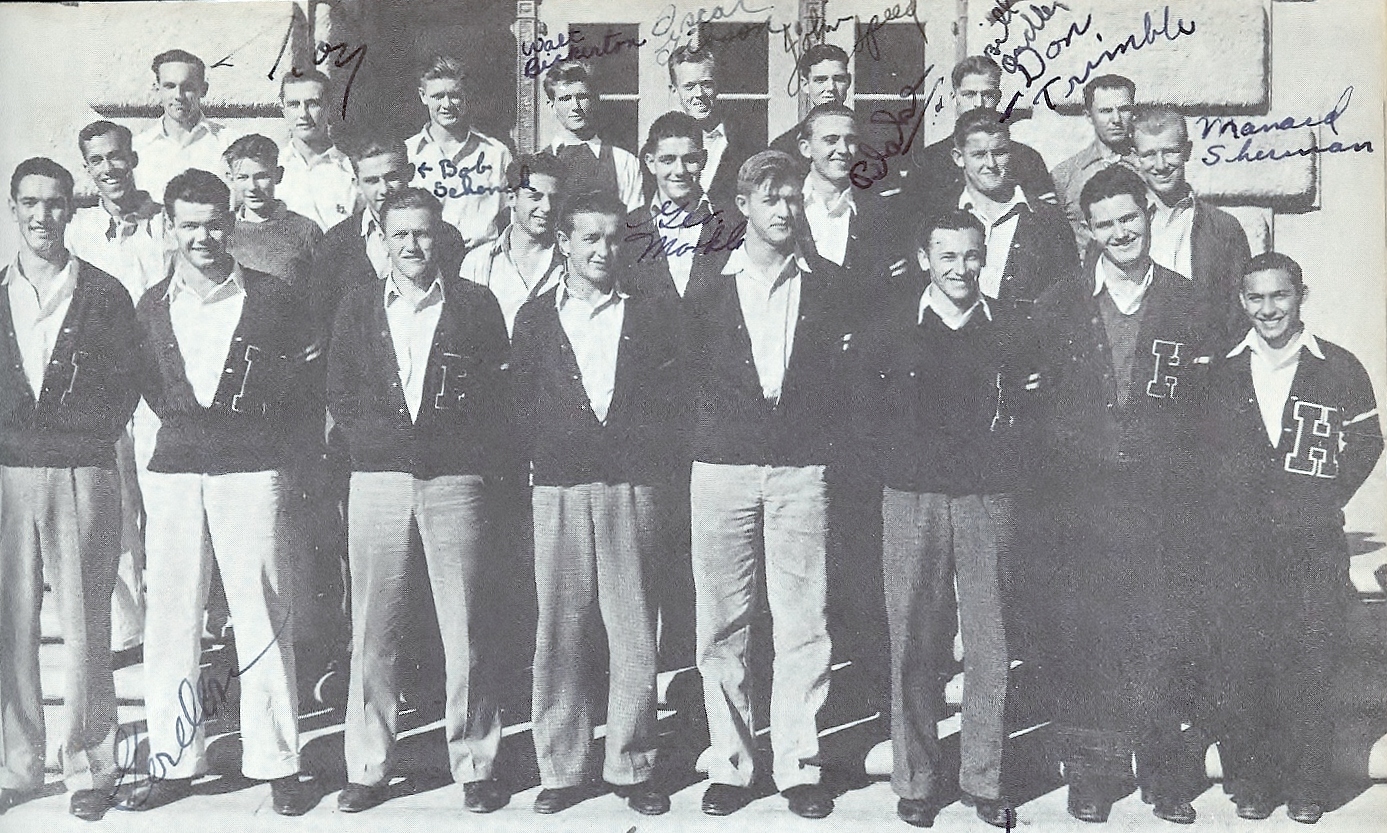
SCRIBE KNOCKS CIF BOSSES
“CIF officials, apparently having a case of blind staggers, threw facts to the wind,” Hache declared, pointing out that Hoover came into the contest with a 7-0-1 record and had outscored its opponents 196-14. Muir was 8-1, with only a 7-6 loss to Santa Ana and with a 202-32 scoring advantage.
This may have been a matchup of the top two but there was a wide gap between 1 and 2. Muir led 7-0 at halftime, then turned the game into a rout in the fourth quarter. Hoover never was in it. The Cardinals were on the Mustangs’ five-yard line at the end of the game but only after recovering a fumble.
First downs favored the visitors, 19-2.
The Northern team had not heard the last of Hoover, however. The Mustangs were poised to take on Santa Barbara for the championship two weeks later after a 14-6, semifinals victory over Monrovia, then suddenly were ruled out after discovery of an ineligible player.
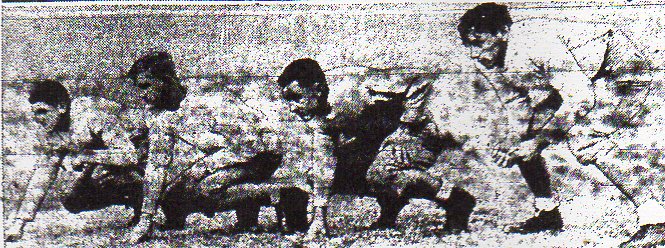
DREADED ADMINISTRATIVE GLITCH
Tony Beebe, a Muir backup quarterback who had transferred from Army and Navy Academy in San Diego’s Pacific Beach suburb, was scholastically deficient, having failed to pass in one of three classes at the military school.
Beebe’s status was first questioned by Hoover principal Floyd Johnson, a ubiquitous and omnipotent figure in all things Hoover and the surrounding Talmadge Park. Johnson resided in that upper middle class enclave, virtually within walking distance of the campus, where he held sway from 1930-56.
Although Johnson is said not to have lodged a formal protest (Johnson said he notified the Muir principal) or reveal how the information came to light, word began to circulate.
The Pasadena school honcho and Army-Navy’s commandant confirmed that Beebe had flunked Spanish. Col. Thomas Davis also declared that Beebe’s scholastic woes were noted when the student’s transcript was mailed to the Northern school.
When Muir was eliminated, Floyd Johnson suggested that Monrovia and Hoover meet for the right to play Santa Barbara but CIF boss Seth Van Patten ruled out the idea of an extra game and selected Monrovia as the opponent for the Golden Tornado.
GO TO YOUR RESPECTIVE CORNERS AND…
Hoover-Muir was just half of a huge prep weekend in San Diego. Long Beach Poly came South Saturday afternoon and took on San Diego High for the Coast League championship.
Poly’s hard-fought, 7-6 victory and 18th win in a row before more than 7,000 persons in City Stadium was the highlight of a spectacular show that included card stunts by the Hilltoppers’ cheering section and halftime entertainment by more than 100 students of the visiting Jackrabbits’ girls drill team and 50-member band.
The game was followed by an event even more spectacular, a 30-minute, uninterrupted brawl. “Boys and Girls in Wild Riot at San Diego!” was the headline on the front sports page of the Los Angeles Times.
Emboldened by the defeat of their arch rivals, Poly students and “non-students” charged the gridiron and knocked down a set of goal posts after the teams and game officials left the field.
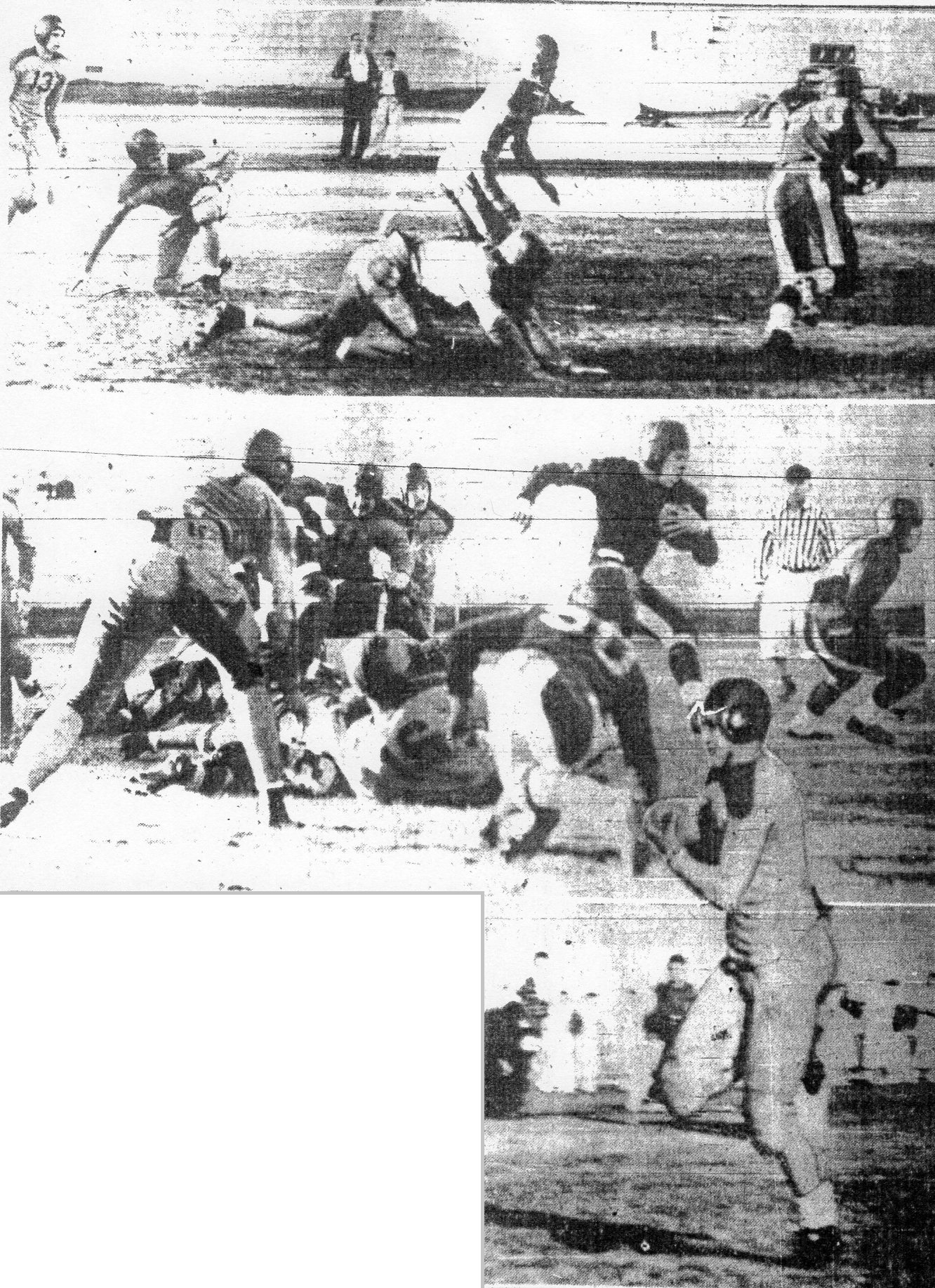
“Aroused San Diego students then launched an offensive of their own,” wrote Harry Hache. “In short order massed fights and individual bouts started all over the field, the most prominent being a hair-pulling, punch-tossing, and scratching duel between two girl students who went at it when one attempted to snatch the other’s pom pom.”
The Associated Press reported that “Harry Smock, 21, of Long Beach, received treatment for a possible broken jaw, face cuts, and severe bruises. A girl, whose name was not learned, was severely burned about the neck when someone lit a match to a pom-pom she was carrying.”
SIGNS OF THE TIMES
Harmony and campfire songs were not in abundance at other venues.
Former San Diego High coach Clarence (Nibs) Price, an assistant at California, sustained a black eye when mysteriously sucker-punched by an irate St. Mary’s booster following the game between UCLA and St. Mary’s in San Francisco.
Price, who was scouting for California, was attacked as he left the field. The assailant fled after game referee Jim Blewett came to Price’s aid.
Meanwhile, a self-styled vice investigator of alleged corrupt San Diego public officials was punched several times by the San Diego district attorney during a secret session of the County Grand Jury. D.A. Thomas Whelan was unrepentant. “He called me a liar,” said Whelan.
SOMETHING NEW
While the CIF created an age limit of 20, boss Seth Van Patten, okayed a pigeon race as the first event at the 1935 Southern Section track championships.
Public schools in Los Angeles broke from the Southern Section to form their own section. The four private schools in Los Angeles, Cathedral, Loyola, Mt. Carmel, and St. Agnes, would be released in 1937 and return to the Southern Section.
The Southern Section’s largest high school wasn’t in California. Phoenix Union, a provisional member, had 4,145 students. Smallest school was Big Pine with 20.
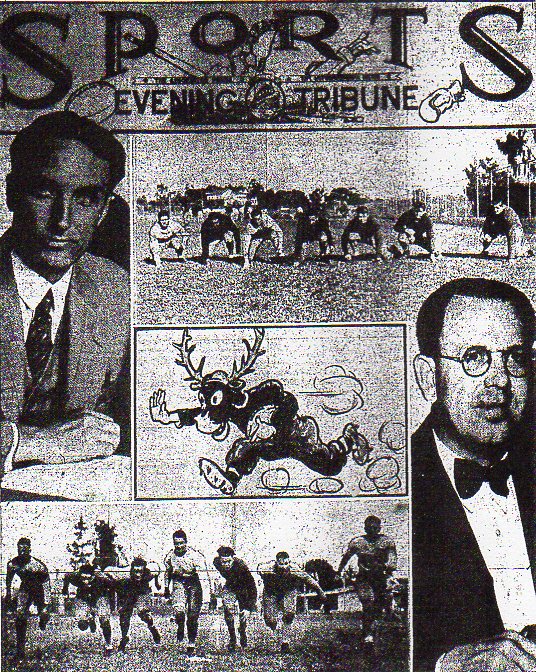
LIGHTS OUT AT LA JOLLA
La Jolla principal Clarence Johnson, concerned about hooliganism and other undesirable night-time activity in the surrounding neighborhood, switched the Metropolitan League showdown with Point Loma to the afternoon.
The game ended at dusk, so lights installed one month before at Scripps Field were put to use. La Jolla (5-0) and Point Loma (5-1) came into the game with a combined 10-1 record.
The Vikings, who touted their “Four Norsemen”, Bill Mayne, Ray Penwarden, Monte Soule, and Johnny Bancroft, defeated the Pointers,14-0, and went on to a 9-0 season. La Jolla would wait 58 years for another undefeated team. Dick Huddleston’s 1993 squad was 13-0 and won the San Diego Section III title.
ARE YOU SERIOUS, COACH?
Grossmont coach Jack Mashin, who visited Japan and China during the summer, was prepared to make another long trip, by foot.
In a moment of weakness, or insanity, Mashin promised his squad that he would walk back to school if the Foothillers won the season’s final game at La Jolla.
A Grossmont victory would have meant a tie for the Metropolitan League title with the Vikings but the 20-12 loss took Mashin off the hook. The coach rode the bus with his players and averted a 23-mile hike through the chill November air.
La Jolla turned the game with three pass interceptions that led to touchdowns.
COAST LEAGUE TO CIF: DROP DEAD!
The Coast League withdrew from the CIF playoffs, opting instead for a financially successful carnival before 12,000 persons at Long Beach Poly, proceeds going to the Parent-Teachers’ Association milk fund.
The league said the playoffs made the season too long but principals also were unhappy with the CIF, particularly because the ruling body had ignored the four-school Coast League’s request for additional members.
Long Beach Wilson and San Diego Hoover would leave the Bay League and join the Coast League in 1936.
The Coast “diss” was a blow image-wise and financially to the struggling CIF, which derived income from the playoffs and was losing its most prestigious affiliate.
San Diego, Santa Ana, Alhambra, and Poly each played two 16-minute quarters in the carnival. The South, comprised of the Hillers and Santa Ana, won 12-8. The Hillers defeated Alhambra 6-2 in the second quarter but lost to Poly 6-0 in the fourth.
Santa Barbara topped Monrovia 14-12 for the championship, although the Dons’ 9-2 season was marked by losses to Poly (20-13) and Santa Ana (13-7).
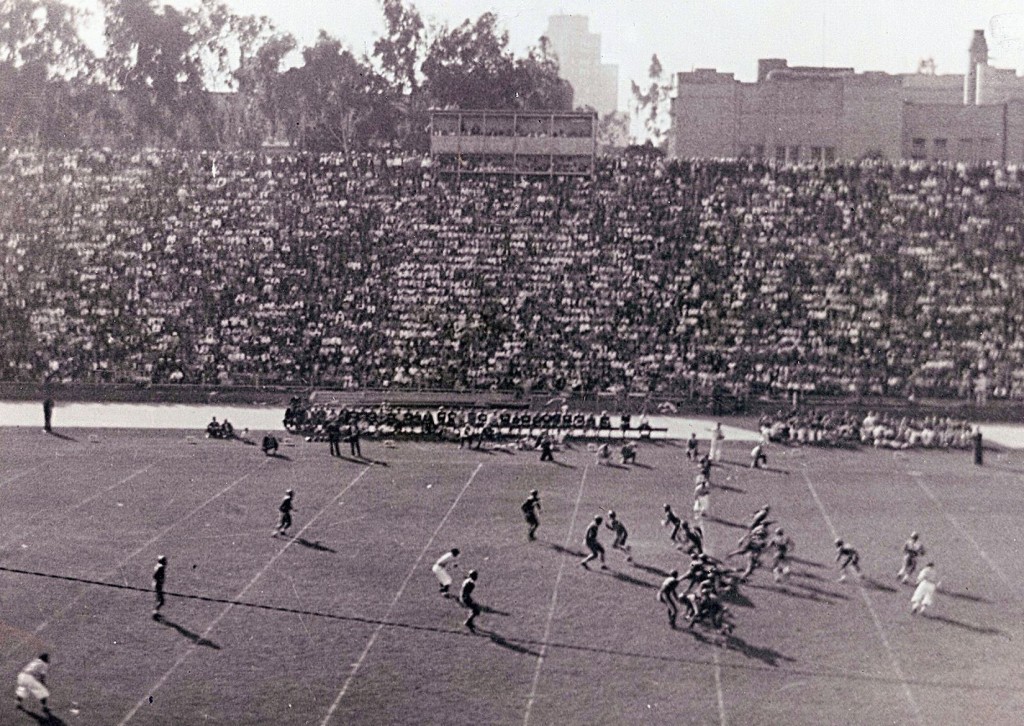
ALWAYS A CARDINAL
In 1955 Roy Engle became Hoover’s head coach and served in that position for 23 seasons, but his legacy began years before as the hero of the Cardinals’ first victory, 7-6 over San Diego.
Engle gained 64 yards in 17 carries and rushed the final 25 yards in three carries in the fourth-quarter, 17-play, 80-yard, winning touchdown drive that took more than seven minutes off the field clock.
The Cavers’ “Dancing Jack” Hoxie was the game’s leading rusher with 86 yards in 16 carries as more than 17,000 looked on in City Stadium.
PERRY’S X’s AND O’s
Coach John Perry on Hoover’s defense: “We use what is commonly called a 6-3-2. My boys are taught man for man and zone defense when our opponents are passing. A high school coach, if he is smart, will make his defensive system fit his players and his opponents’ styles of play.”
Cardinals foes completed seven passes in 50 attempts in the first five games, including San Diego’s 1 for 8.
DEE-FENSE
Hoover had acquired a defensive reputation with five shutouts to start the season in 1934, a record that was equaled only by Ramona, against a largely junior varsity schedule, in 1954 and Lincoln in 1977 (the Hornets’ streak lasted six games).
“I don’t remember being that good on defense as a junior,” said Engle in 1977 as he wound down his coaching career at Hoover. “We always played the top eleven players, whether they played offense or not. We’d get mad if the coach took us out.”
One play remained with Engle. “We went through the league without allowing a point until the last game and even then it wasn’t a safety,” he said to Steve Brand of The San Diego Union.
Hoover defeated El Segundo, 13-2, for the Bay League title. Engle was back to punt and tackled in the end zone for two points. The coach swore he was down on the two-yard line and was pushed into the end zone.
CARDINALS HANGOUT
The “Hoover Drug Store”, which opened to popular review across the street from campus, at 45th Street and El Cajon Boulevard, offered sandwiches, homemade pies, and hot chocolate at a nickel each, malted milks and “Hoover Specials” for a dime.
QUICK KICKS
Escondido defeated Coronado 12-7 for the Cougars’ first victory ever over the Islanders…Coronado had a 17-0-3 record against the Grape City entry, dating to the first game in 1914…San Diego’s Glenn Broderick and other area coaches were hosted at the U.S. Grant Hotel and spoke of their visions for the 1935 season…ex-Grossmont gridder Dinon Busch moved South from Hemet High to replace Vance Clymer at Sweetwater…Point Loma, under new coach Joe Beerkle, unveiled a grass field after years on dirt and rocks…Beerkle welcomed 40 candidates on the first day of practice and 30 more when school started…Hoover greeted 18 lettermen, San Diego 11…the Hilltoppers’ Ben Sohn and Mike Sisto still were working summer jobs and missed the first week of practice…to avoid conflict with San Diego State’s Nov. 8 game in the Stadium, Hoover switched dates with Beverly Hills so that it could meet the Hillers on Oct. 26… San Diego scrambled to fill a date when Santa Monica backed out… the Cavers signed Long Beach Wilson, a school named after former Democrat President Woodrow Wilson… coincidentally President Franklin Roosevelt, another Democrat, was scheduled to appear at San Diego’s California-Pacific Exposition in Balboa Park the same weekend…thirty-four San Diego players worked out under the lights at Arizona’s Phoenix Union High after an all-day bus ride that began at 7 a.m., the same script as followed in the 1934 game… the Hillers tied the Coyotes 12-12 the following night, then bused back the next morning… San Diego visited Santa Ana a week later in the 25th renewal of a rivalry that began in 1905… the 10-7 victory gave the Hillers a 13-12 lead in the series… Santa Ana dropped out of the Coast League after the 1936 season and the teams did not meet again until the 1959 playoffs…a 14-13 loss to arch-rival Sweetwater in Week 5 ended a Grossmont streak of 23 victories and 1 tie without defeat dating to 1932… the Foothillers held sole possession of the County record until Kearny went 23-0-1 from 1963-65… The San Diego Union sports editor Ted Steinmann, complained about the “outdated”, manually-operated City Stadium scoreboard and suggested “one of those new (electric) timing clocks Western Union has”… Wallace Slattery of Hoover and Charlie Adair of San Diego, both starting centers, saw their careers end in mid-season because of high school age limits… Adair still made the all-Southern California second team…Roy Engle was on the third team and San Diego sophomore tackle Ed Becker on the fourth team….